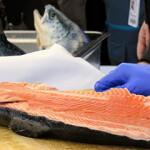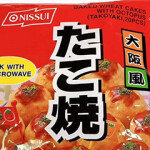Japanese minister visits Saga, where seaweed and fish harvests have plummeted

Japan Minister of Agriculture Forestry and Fisheries Genjiro Kaneko traveled to Saga Prefecture on 5 March, where he heard complaints from fishermen that fish and seaweed harvests had become poor as a result of a land reclamation project.
The Isahaya Bay reclamation project constructed a dike and sluice gate to close off an arm of the Ariaka Sea and turn 1,550 hectares (3,830 acres) of tidal flats into farmland. The gate was closed to block off the tidal inflow of the sea in 1997.
Kaneko visited the Saga Prefecture Ariake Fisheries Promotion Center in Ogi City, then on to the Tara-cho Central Community Center to exchange opinions with Saga Governor Yoshinori Yamaguchi and fishermen about the Isahaya Bay reclamation project. Yamaguchi said that fishermen were at no fault for the decline in fisheries, and that the dike is to blame for the issues.
Soon after the gate dike gate was closed in 1997, red tides and oxygen-deficient waters followed, and nori and fish populations plummeted. At the time, local fishermen filed a successful lawsuit demanding that the sluice gate be re-opened, and at first, but the reopening was not carried out when the national government challenged the decision. The suit worked its way up to Japan's Supreme Court, which remanded it back to the Fukuoka High Court for a re-trial.
Separately, in another part of the semi-enclosed sea, in Kagoshima Prefecture, Manila clam harvests crashed from an annual harvest in the early 1980s of over 80,000 metric tons (MT) to less than 5,000 MT by the late 1990s. A recent labeling fraud case, where clams were dumped on tidal flats and “harvested” and labeled as local, further damaged the region's seafood sector.
Photo courtesy of ziggy_mars/Shutterstock






Share